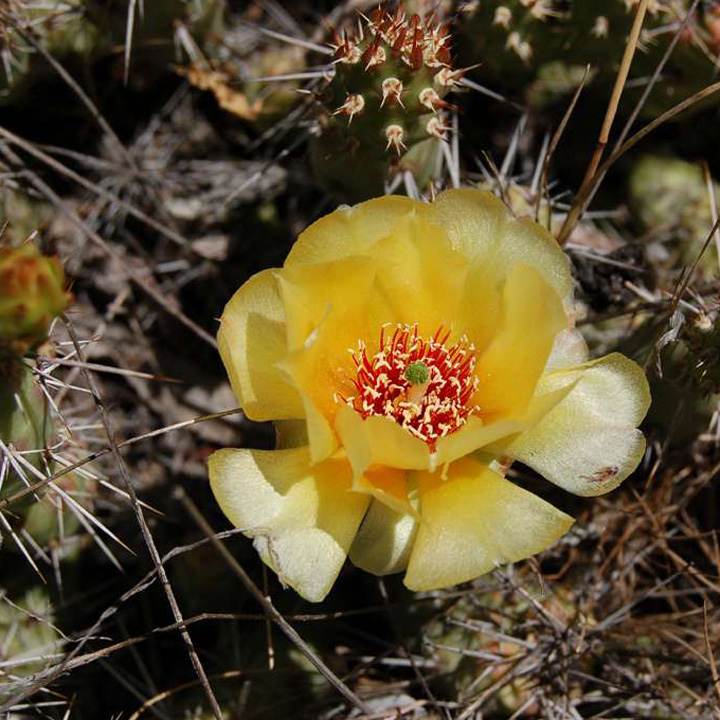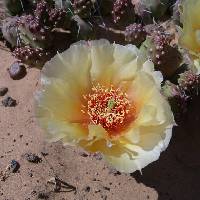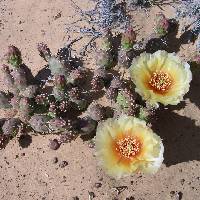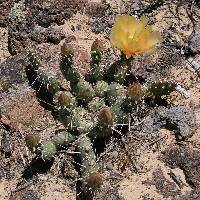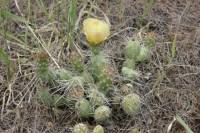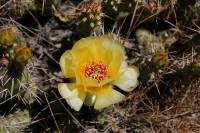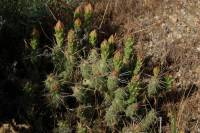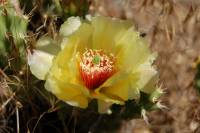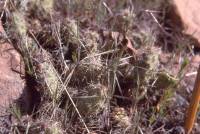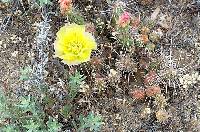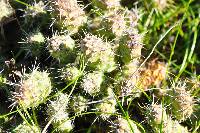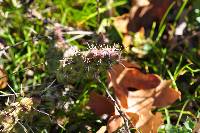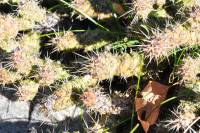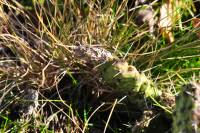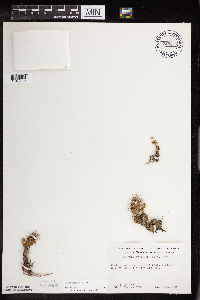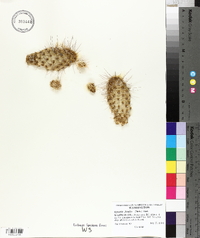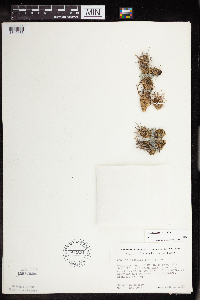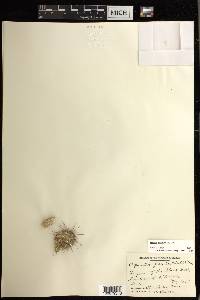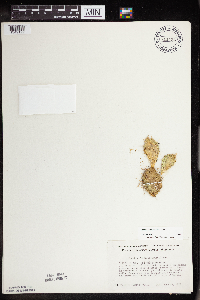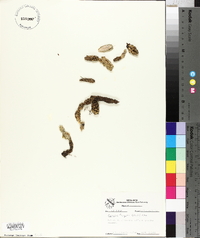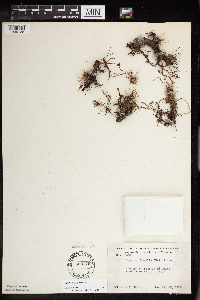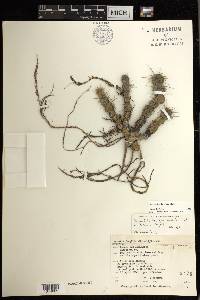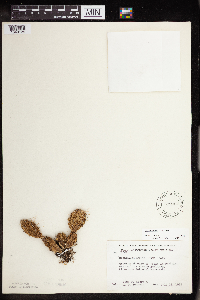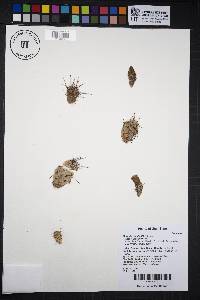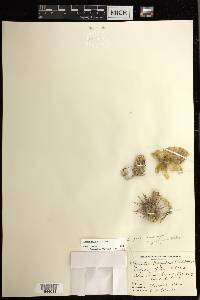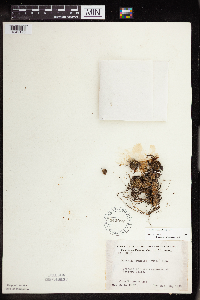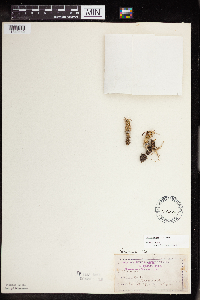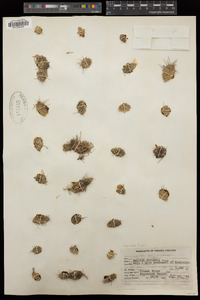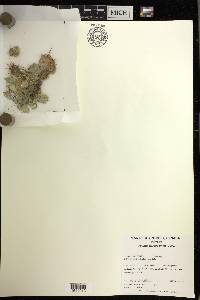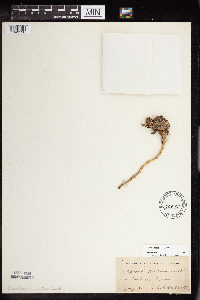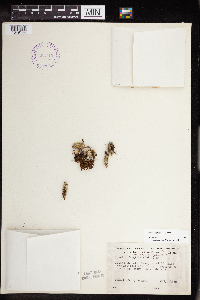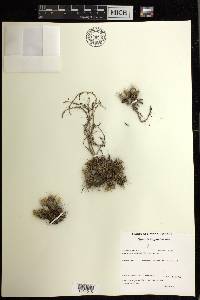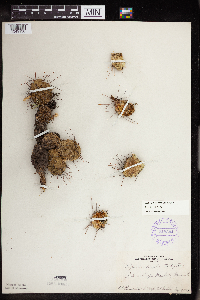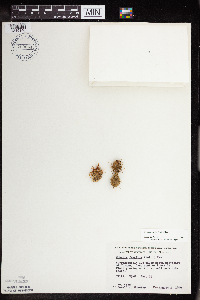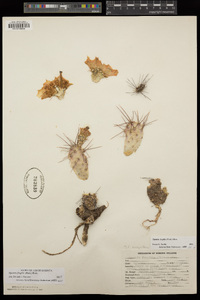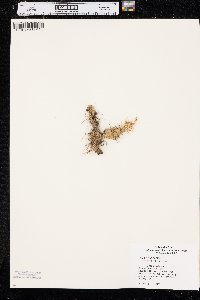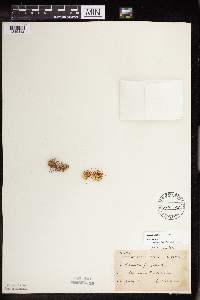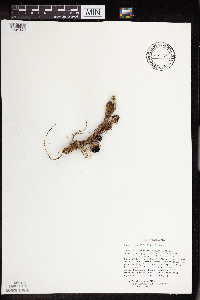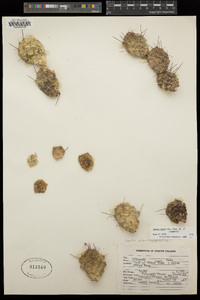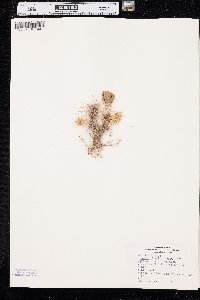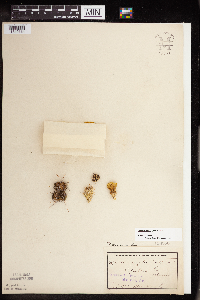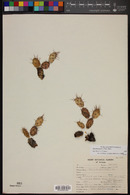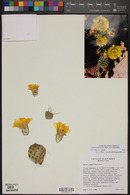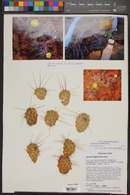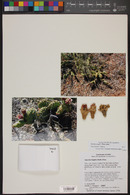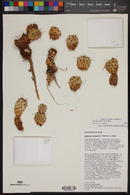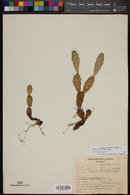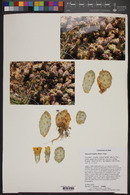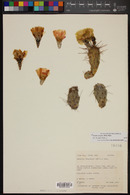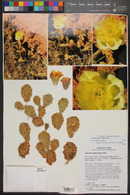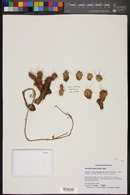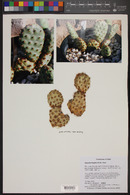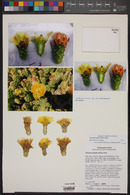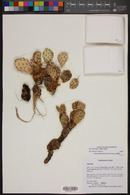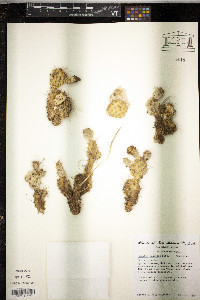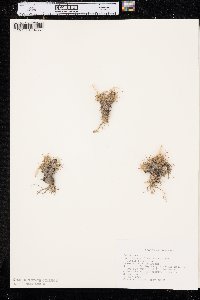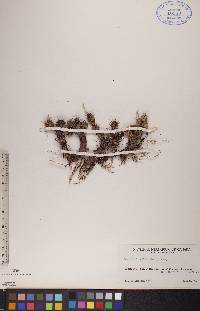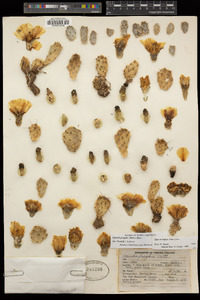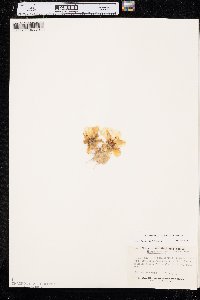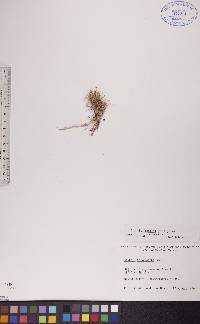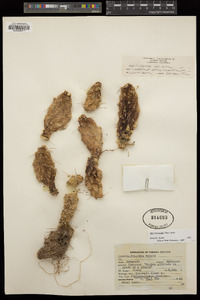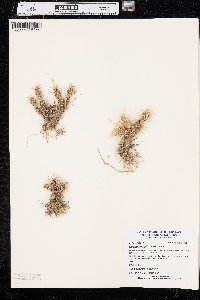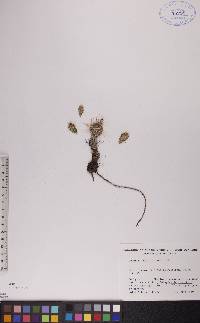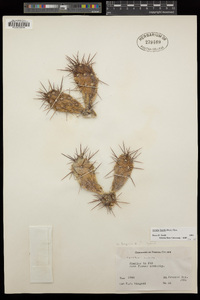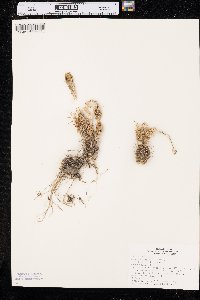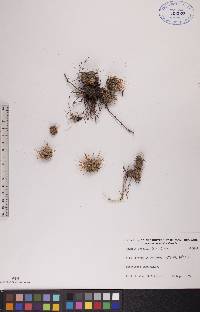Opuntia fragilis
|
|
|
|
Family: Cactaceae
brittle pricklypear, more...Pygmy Prickly-Pear, brittle cactus, fragile cactus, jumping cactus, little pricklypear, little pricklypear cactus
|
Shrubs, low, forming mats, 2-10 cm. Stem segments easily detached when terminal, dark green, subspheric to subcylindric, to flattened and elliptic obovate, (1.5-)2-5.5 × (1-)1.5-3 cm, low tuberculate (pronounced when dried), glabrous; areoles 3-5 per diagonal row across midstem segment, oval, 3 × 2.5 mm; wool white. Spines 3-8 per areole, in most areoles spreading, gray with brown tips, straight, ± acicular, terete, the longest 8-24 mm; depressed spines at base of areoles 0-3, 1-3 mm. Glochids in crescent at adaxial margin of areole, tan to brown, inconspicuous, to 3 mm. Flowers: inner tepals yellow, sometimes basally red, 20-26 mm; filaments white or red; anthers yellow; style white; stigma lobes green. Fruits tan, 10-30 × 8-15 mm, dry, glabrous; areoles 12-22, distal areoles bearing 1-6 short spines. Seeds tan to gray, flattened, warped, oblong to subcircular, 5-6 mm diam.; girdle protruding 1-1.5 mm. 2n = 66. Flowering summer (late Jun-early Jul). Barren areas in grasslands, woodlands, sandy or gravelly soils, on outcrops of granite, limestone, or quartzite; 0-2400 m; Alta., B.C., Man., Ont., Sask.; Ariz., Calif., Colo., Idaho, Ill., Iowa, Kans., Mich. , Minn., Mont., Nebr., N.Mex., N.Dak., Okla., Oreg., S.Dak., Tex., Utah, Wash., Wis., Wyo. Opuntia fragilis is a widespread, though inconspicuous, species; in many places, it flowers infrequently, if at all. Its easily detached stem segments are dispersed by animals and possibly water.
Plant: low, mat-forming shrub, 2-10 cm tall. PADS dark green, glabrous, the terminal ones easily detached, subspheric to cyclindric, to flattened and elliptic obovate, low-tuberculate (becoming pronounced when dried), (1.5-)2-5.5 cm long, (1-)1.5-3 cm broad; AREOLES 3-5 in a row diagonal across midpad, oval, 3 mm long, 2.5 mm wide; wool white Leaves: SPINES in most areoles, gray with brown tips, terete, straight, spreading, 3-8 per areole, the largest to 3.5 cm long. GLOCHIDS inconspicuous, tan to brown, in apical crescent in areole Flowers: inner tepals yellow, sometimes basally red, 2-2.6 cm long; filaments white or red; style white; fresh stigmas green Fruit: FRUITS tan, dry, 1-3 cm long, 0.8-1.5 cm in diameter; areoles 19-21, the uppermost ones bearing 1-6 short spines. SEEDS 5-6 mm in diameter; girdle protruding 1-1.5 mm. Misc: Sandy or gravelly soils or on outcrops of granite or quartzite, barren areas in grasslands, woodlands, forests; 1500-2400 m (4900-7900 ft); May-Jul REFERENCES: Pinkava, Donald J. Cactaceae. 2003. J. Ariz. - Nev. Acad. Sci. Volume 35(2). Benson 1982, FNA 2003 Common Name: brittle pricklypear Duration: Perennial Protected Status: Salvage restricted status in Arizona General: Shrubs forming low mats that reach 2-10 cm tall with clumps often 30 cm or more in diameter, the stem segments are easily detached when terminal and the larger terminal joints are bluish-green to dark green and spheric to subspheric while flattened to elliptic, 2-4.5 cm long by 1-4 cm across and 1-2 cm thick, the surface is glabrous with 3-5 areoles per diagonal row across the middle stem segment, they are oval and 3 by 2.5 mm and typically 3-6 mm apart with white wool. Spines: Spines 3-8 per areole and usually present on most of joint but occasionally on none of them, the longest found in the uppermost areoles and 8-24 mm, these usually spreading and gray with brown tips but straight with 0-3 depressed spines at base of areoles and 1-3 mm, the tan to brown glochids are in a crescent at adaxial margin of areole and are inconspicuous to 3 mm. Flowers: Flower 3-4 cm long by 4.5 cm diameter the inner tepals are yellow to greenish but sometimes magenta or occasionally basally red, 20-26 mm cuneate or cuneate-obovate, outer tepals 15-25 mm long by 12-20 mm broad with yellow anthers and a white style. Fruits: Fruits tan at maturity but green or reddish-green prior, 10-30 mm long by 8-15 mm in diameter, they are spiny or spineless, dry and glabrous. Ecology: Found in barren areas in grasslands, woodlands, in sandy or gravelly soils, on outcrops of granite, limestone, or quartzite from 2,000-8,000 ft (610-2438 m), flowers June-July. Notes: Benson 1982 says that O. fragilis is an almost comical miniature version of the prickly pear, with plump little joints, often inconspicuous and growing beneath shrubs for protection. Ethnobotany: A poultice of the flesh was applied to skin sores and infections, and the flesh was eaten to cause urination, a poultice of the heated quills was applied to ease swollen throats. A soup was made of the boiled flesh and fat, or the flesh was pit roasted and eaten. Spines were used to make fish hooks. Etymology: Opuntia from ancient root puncti for prickled, while fragilis means brittle or fragile. Synonyms: Opuntia fragilis var. brachyarthra, Opuntia brachyarthra, Cactus fragilis Editor: LCrumbacher, 2010 Prostrate or spreading, forming dense mats to 5 dm wide; joints orbicular to obovate, very turgid, 2-5 נ1-2.5 cm, easily detached; areoles crowded, commonly 3-6 mm apart, usually coarsely white-woolly, all or nearly all armed with (1-)3-7 strongly barbed spines 1.2-2.5 cm; fls yellow to greenish, 4-5 cm wide; fr fleshy and greenish to reddish when young, dry and tan at maturity, inedible, 1.2-1.5 cm; seeds discoid, with an irregular margin; 2n=66. Dry prairies and plains; Ill. and Wis. and n. Mich. to B.C., n. Tex., and Ariz. May-July. Gleason, Henry A. & Cronquist, Arthur J. 1991. Manual of vascular plants of northeastern United States and adjacent Canada. lxxv + 910 pp. ©The New York Botanical Garden. All rights reserved. Used by permission. |
|
|
|

